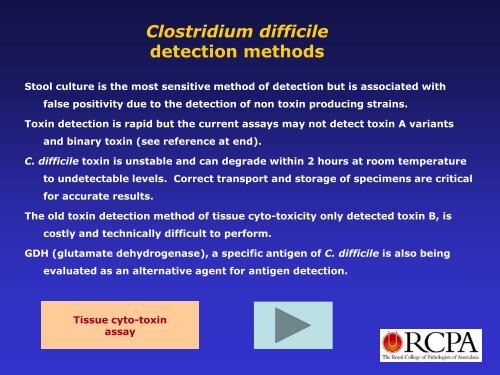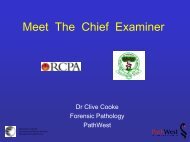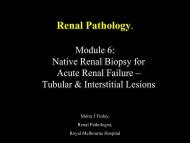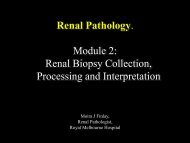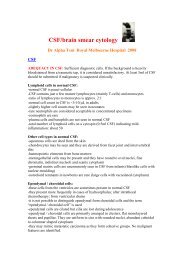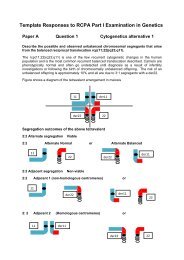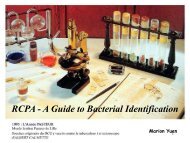Vomiting & Diarrhoea in a nursing home - Rcpa.tv
Vomiting & Diarrhoea in a nursing home - Rcpa.tv
Vomiting & Diarrhoea in a nursing home - Rcpa.tv
Create successful ePaper yourself
Turn your PDF publications into a flip-book with our unique Google optimized e-Paper software.
Clostridium difficile<br />
detection methods<br />
Stool culture is the most sensitive method of detection but is associated with<br />
false positivity due to the detection of non tox<strong>in</strong> produc<strong>in</strong>g stra<strong>in</strong>s.<br />
Tox<strong>in</strong> detection is rapid but the current assays may not detect tox<strong>in</strong> A variants<br />
and b<strong>in</strong>ary tox<strong>in</strong> (see reference at end).<br />
C. difficile tox<strong>in</strong> is unstable and can degrade with<strong>in</strong> 2 hours at room temperature<br />
to undetectable levels. Correct transport and storage of specimens are critical<br />
for accurate results.<br />
The old tox<strong>in</strong> detection method of tissue cyto-toxicity only detected tox<strong>in</strong> B, is<br />
costly and technically difficult to perform.<br />
GDH (glutamate dehydrogenase), a specific antigen of C. difficile is also be<strong>in</strong>g<br />
evaluated as an alternative agent for antigen detection.<br />
Tissue cyto-tox<strong>in</strong><br />
assay


